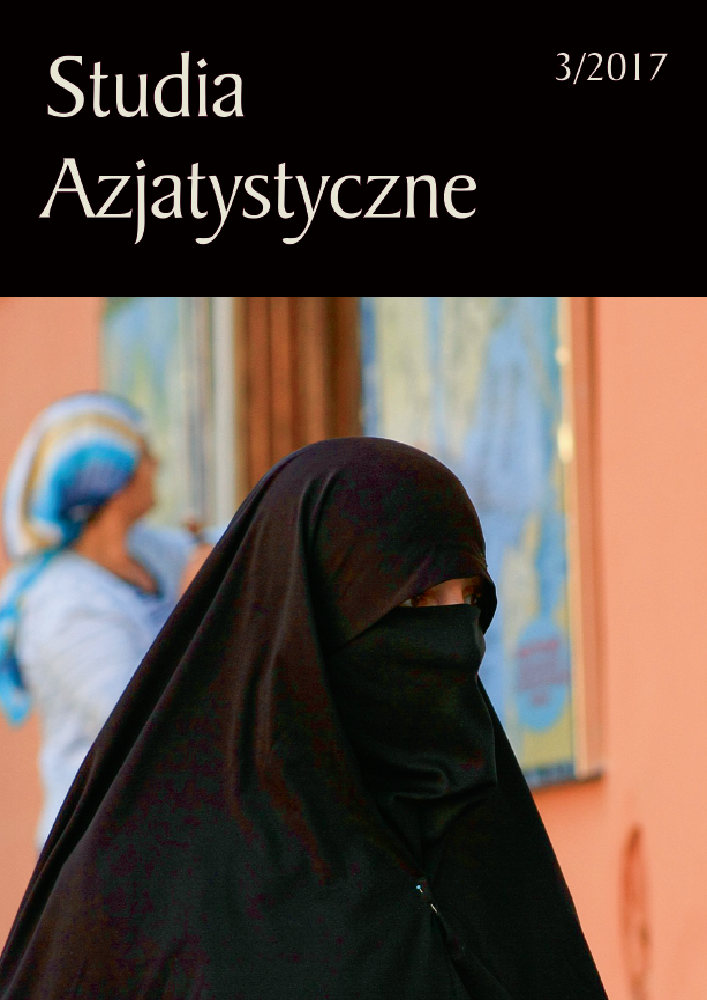Abstrakt
Chinese silk has a long history. The sericulture began in Neolithic times. Before the Western Zhou period (1600-1046 BC) the most popular textiles were plain weaved (juan) and gauzes (sha and luo). During the kingship of the Zhou dynasty (Western and Eastern) new types of textiles began to be woven, for example: pseudo-damasks (qi and han qi) and warp faced compound tabby (jin). The most beautiful four-color, and five-color jin fabrics were woven in Han dynasty (206 BC-220 AD). In this period China came in contact with the Western world. It was the beginning of the so-called Silk Road. Weaving technique still flourished during the next periods. The first samit textiles (often decorated with Persian motives) were weaved during the Tang dynasty. The sericulture was a ritual practiced in the common households and royal courts. The silkworm had its own temples and goddess.
Bibliografia
Becker, John. 1987. Pattern and Loom. Copenhagen: RHODOS.
Boulnois, Luce. 1968. Szlakiem Jedwabiu. Tłum. Tadeusz Zabłudowski. Warszawa: PWN.
Broudy, Eric. 1993. The book of looms. A history of handloom from ancient times to the present. Hanover - London: Brown University Press.
Good, Irene. 1995. On the question of silk in pre-Han Eurasia, Antiquity 69, 266 (1995), 959-968.
Good, Irene, Jonathan Mark Kenoyer, Richard Meadow. 2009. New Evidence for Early Silk in the Indus Civilization, Archaeometry 51, 3, 457-466.
Kajdańska, Aleksandra, Edward Kajdański. 2007. Jedwab. Szlakami dżonek i karawan. Warszawa: Książka i Wiedza.
Kossowska, Dominika. 2015. Analiza powstawania synkretycznych stylów zdobniczych w Azji Środkowej w VI-VIII w. n.e. na podstawie tkanin z Kotliny Turfańskiej, Studia Azjatystyczne 1, 35-49.
Kuhn, Dieter. 1988. Textile Technology: Spinning and Reeling, Joseph Needham (red.) Science and Civilization in China vol. 5 Chemistry and Chemical Technology, part IX. Cambridge - New York – New Rochelle - Melbourne - Sydney: Cambridge University Press.
Kuhn, Dieter, Zhao Feng. 2012. Chinese Silks. New Haven - London - Beijing: Yale University Press, Foreign Language Press.
Kuhn, Dieter. 2012. Reading the Magnificence of Ancient and Medieval Chinese Silks: Dieter Kuhn, Zhao Feng (red.). Chinese Silks. New Haven - London - Beijing: Yale University Press, Foreign Language Press, 1-64.
Michałowska, Marta. 2006. Leksykon włókiennictwa. Warszawa: Krajowy Ośrodek Badań i Dokumentacji Zabytków w Warszawie.
Nahlik, Adam. 1971. Zarys historii jedwabnej tkaniny dekoracyjnej do końca XVIII w. Toruń: Uniwersytet Mikołaja Kopernika.
Peng Hao. 2012. Sericulture and Silk Weaving from Antiquity to the Zhou Dynasty: Dieter Kuhn, Zhao Feng (red.). Chinese Silks. New Haven - London - Beijing: Yale University Press, Foreign Language Press, 65-114.
Rothschild, Norman Harry. 2014. Rhetoric of the Loom: Discursive Weaving Women in Chinese and Greek Traditions, seria Sino-Platonic Papers.
Rudenko, Sergei, Ivanovich. 1970. Frozen tombs of Siberia: The Pazyryk Burials Of Iron Age Horsemen. London: Dent.
Uhlig, Helmut. 2007. Jedwabny Szlak. Kultury Antyku Między Chinami A Rzymem. Tłum. Janusz Danecki. Katowice: Książnica.
Ulanowska, Agata. 2013. Egejskie techniki tkackie w epoce brązu. Zastosowanie archeologii eksperymentalnej w badaniach nad włókiennictwem egejskim. Nieopublikowana praca doktorska obroniona na Wydziale Historycznym Uniwersytetu Warszawskiego.
Tucker, Jonathan. 2003. Silk Road: art and history. London: Philip Wilson Publishers.
Wang, Helen. 2013. Textiles as Money on the Silk Road?, Journal of the Royal Asiatic Society, 23, 2 (2013), 165-174.
Xuanzang. 1884. Si-Yu-Ki: Buddhist Record of the Western World, vol. II. Tłum. Samuel Beal. London: Trubner & Co., Ludgate Hill.
Yokohari, Kazuko. 2006. The Horyu-ji Lion-hunting Silk and Related Silks: Regula Schorta (red.). Central Asian Textiles and their Contexts in the Early Middle Ages. Riggisberg: Abegg-Stiftung, 155-173.
Zhang Wen, Xu Chunzhong, Wu Zhuo, Qiu Yiping. 2013. A Study on the Auspicious Animal Motifs on Han Textiles in Ancient China, The Silk Road 11 (2013), 100-112.
Zhao Feng. 2002. Recent excavations of textiles in China. Hong Kong: ISAT / Costume Squad Ltd.
Zhao Feng. 2004. The evolution of textiles along the Silk Road: James C. Y. Watt (red.). China: Dawn of the Golden Age 200-750 A.D. New York: The Metropolitan Museum of Art, New Haven -London: Yale University Press, 67-78.
Zhao Feng. 2010. Woven Color in China: The Five Colors in Chinese Culture and Polychrome Woven Textiles, Textile Society of America Symposium Proceedings. Paper 63, http://digitalcommons.unl.edu/tsaconf/63, dostęp: 1.08.2016.
Zhao Feng. 2015. Weaving Technology.: Yongxiang Lu (red.). A history of Chinese Science and Technology, Tom 2. Verlag - Berlin - Heidelberg: Springer, 379-493.
Żamowiecki, Longin. 1915. Historya tkanin jedwabnych. Kijów: Drukarnia Polska w Kijowie.
Żuchowska, Marta. 2016. “Roman Textiles” in the Hou Han Shu. A 5th Century Chinese Vision versus Roman Reality, ANABASIS Studia Classica et Orientalia 6 (2015), 216-244.
Licencja

Ten utwór jest dostępny na licencji Creative Commons Uznanie autorstwa 4.0 Międzynarodowe.
